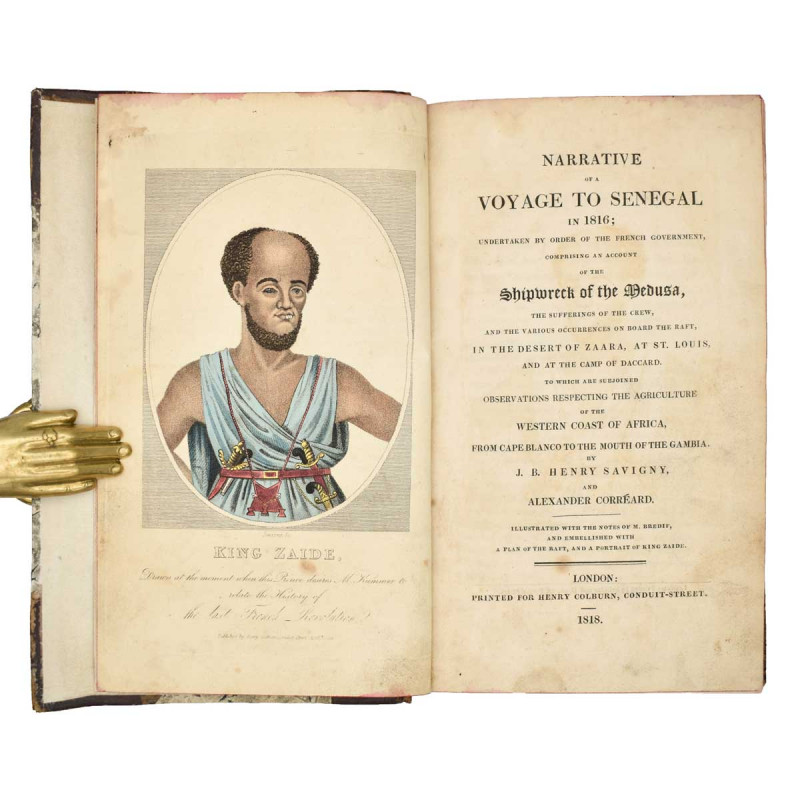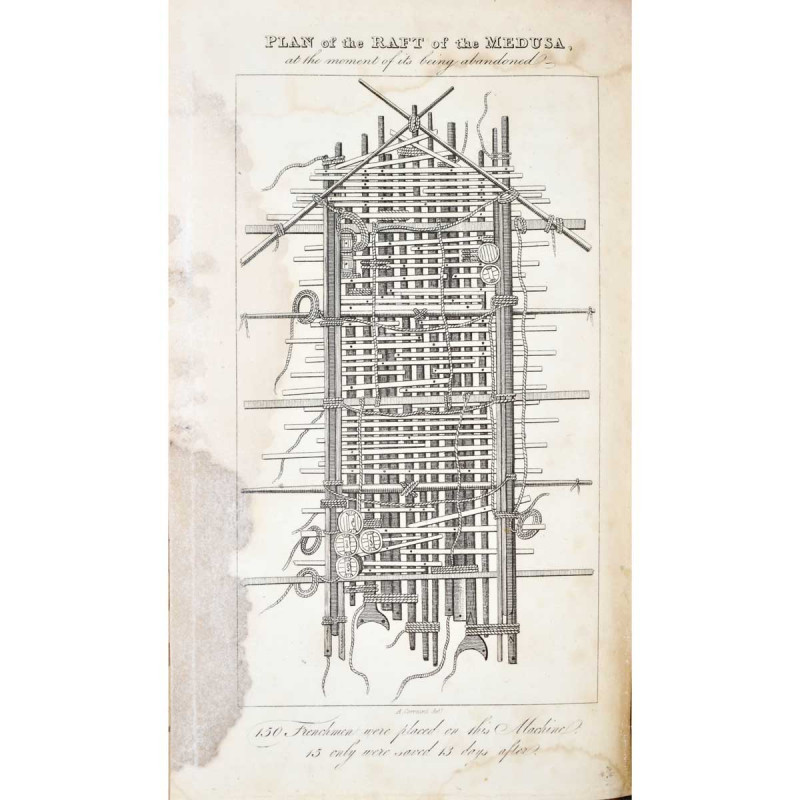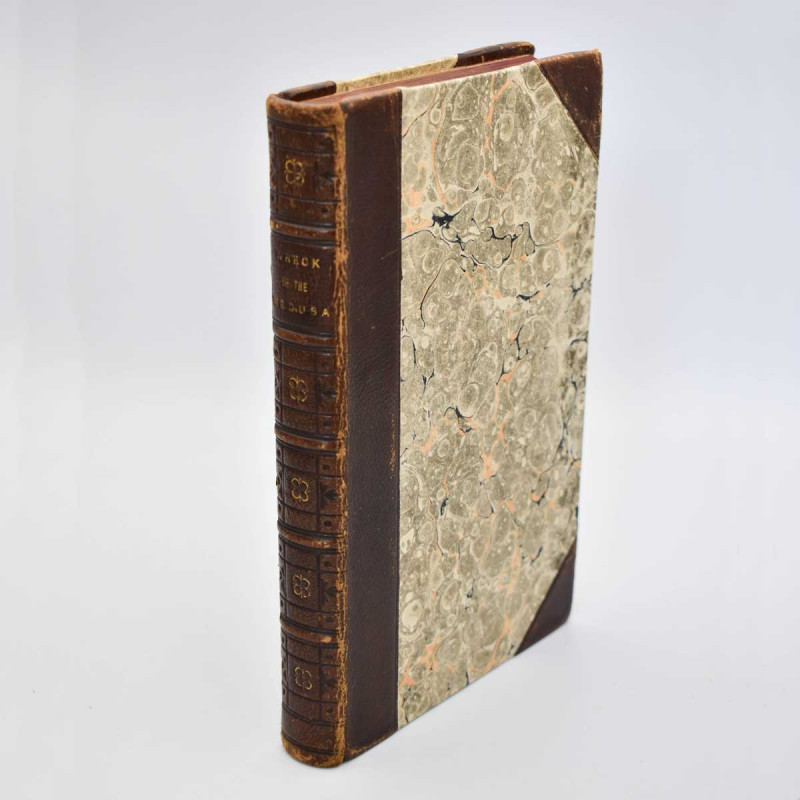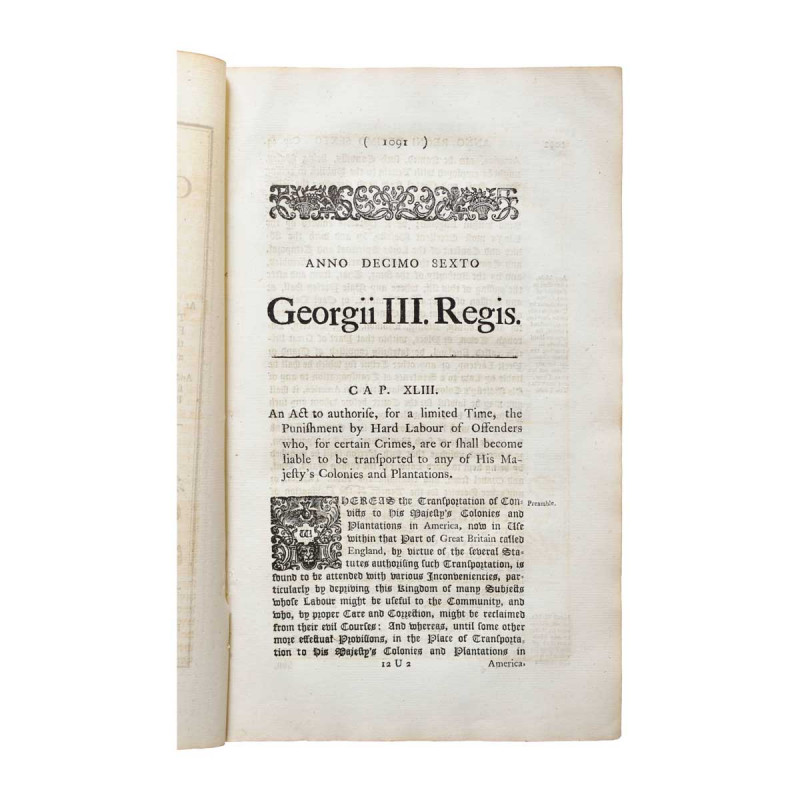Narrative of a Voyage to Senegal in 1816; undertaken by order of the French Government, comprising an account of the Shipwreck of the Medusa, the suffering of the crew, and the various occurrences on board the raft…




Book Description
FIRST ENGLISH EDITION, half title, hand coloured portrait frontispiece, plan of raft cleaned with light stain, occasional light staining throughout, rebound, new endpapers, contemporary half calf over marbled boards, 8vo, London, Henry Colburn, 1818
“Of one hundred and fifty persons embarked upon the raft, and left to their fate, only fifteen remained alive thirteen days afterwards; but of these fifteen, so miraculously saved, life constituted the sole possessions, being literally stripped of everything.”
A first hand account of when 147 men, abandoned on a makeshift raft after their ship ran aground off the coast of africa. There followed murder, class warfare, mutiny, starvation, unimaginable depravity and eventually cannabalism.
In June 1816, the French Frigate, The Medusa, and three other ships sailed for the French colony of Senegal in West Africa. An inexperienced captain would run the ship aground and a shortage of lifeboats meant that only the upper classes and senior officers would be allowed to board them. The lower classes, and a handful of crew left behind, had to build their own makeshift raft for 147 people. The lifeboats briefly towed the raft until, in an act of cowardice and cruelty, the captain cut it loose to drift away on a horrific 13-day odyssey.
On the very first night adrift, 20 men were murdered, and by the fourth day there were only 67 people left alive. They had resorted to murder and cannibalism to survive. When the raft was found 13 days later, only 15 of the original 147 had survived.
1815 was a turbulent year for France. Following Napoleon's defeat at Waterloo, the French monarchy was restored. The new king, Louis XVIII, gave unqualified men highly paid jobs as political favours. The captain of the Medusa, Viscount Hugues Duroy de Chaumereys, was one of them. It was widely considered his incompetence which led to the horrifying events that unfolded shortly after the Medusa set out to sea. Chaumereys hadn’t been at sea for over 20 years and he became a symbol of Government corruption. The social and political turbulence that plagued French society was exposed, and France itself was considered a political shipwreck.
The authors Correard and Savigny were both survivors of the Medusa shipwreck. Alexandre Correard was an engineer and Jean-Baptiste Savigny was a doctor. Their professions may have saved their lives. Their account inspired the famous painting ‘The Raft of the Medusa’ by Theodore Gericault. Correard was even interviewed by Gericault, and both authors appear in the painting. Displayed for the first time in 1819, the work shook the world and scandalised high society, partly due to the portrayal of a heroic black man.
A scarce edition of an important book, both politically influential as well as an insight into the horrors and suffering of being abandoned at sea.
Author
SAVIGNY, J.B. AND CORREARD, ALEXANDRE
Date
1818
Publisher
London, Henry Colburn
Friends of the PBFA
For £10 get free entry to our fairs, updates from the PBFA and more.
Please email info@pbfa.org for more information










